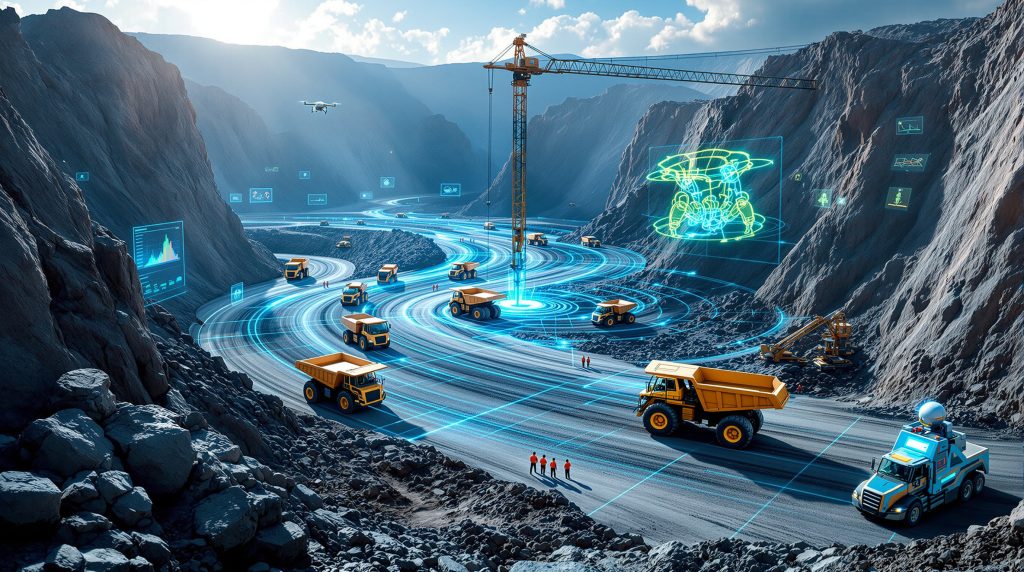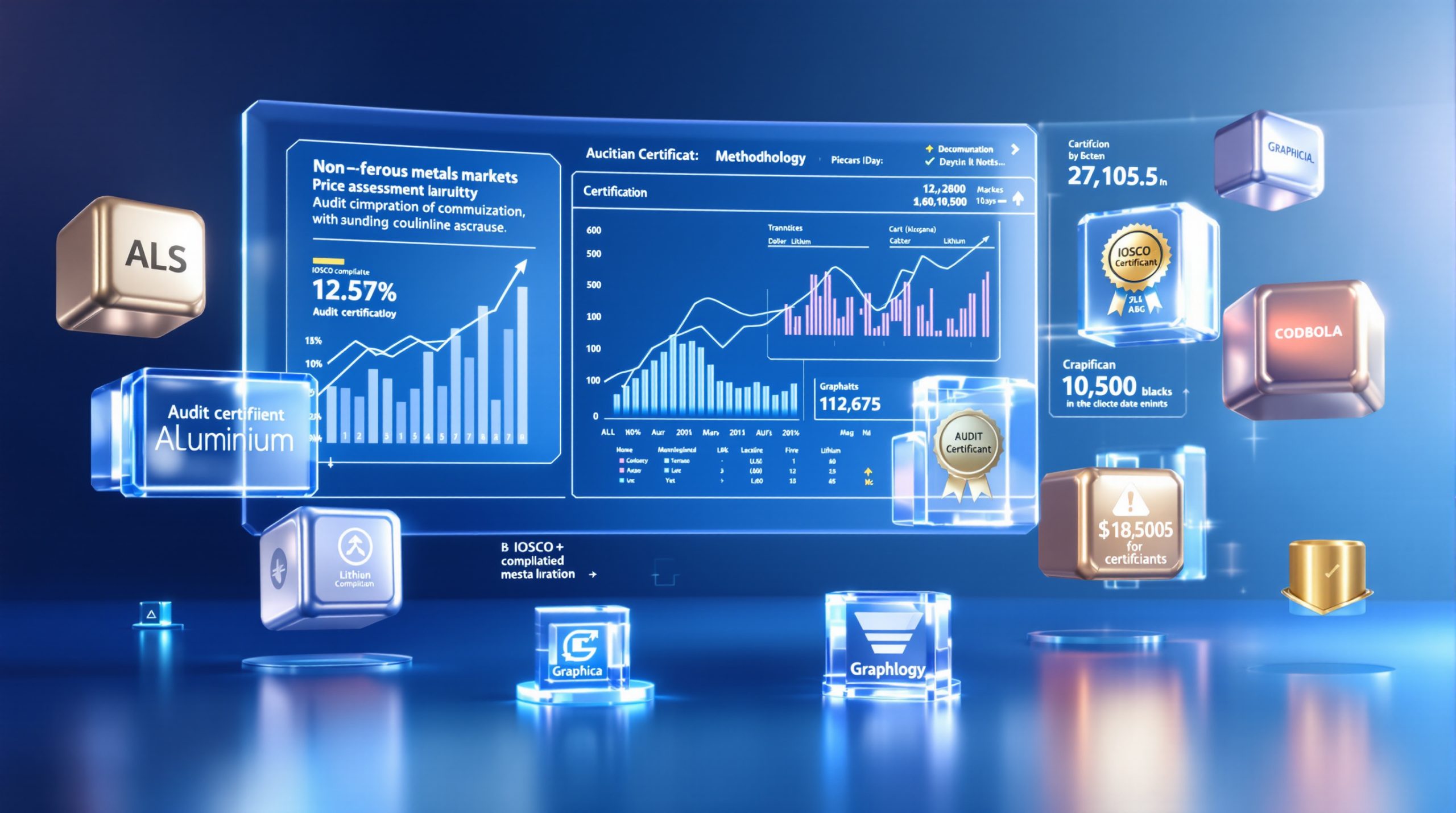Revolutionizing Mining: The Impact of Autonomous Technologies on Safety and Productivity
How Are Autonomous Systems Transforming Modern Mining Operations?
The global mining industry is experiencing a technological revolution with autonomous systems leading the charge. This transformation represents a fundamental shift from traditional labor-intensive operations to digitally-driven processes that enhance safety, productivity, and sustainability across the entire mining value chain.
The market for autonomous trucks and drilling systems in mining is growing at a remarkable pace, valued at approximately $4.8 billion in 2021 and projected to reach $11.2 billion by 2027, reflecting a compound annual growth rate of 15.3%. This rapid expansion underscores the industry's confidence in automation as a cornerstone of future operations.
Autonomous technologies in mining have evolved through distinct developmental phases over the past three decades. Beginning with basic GPS guidance systems in the 1990s, progressing through semi-autonomous operations with remote oversight in the 2000s, and culminating in today's fully autonomous fleets capable of complex decision-making without human intervention.
According to the International Council on Mining and Metals, leading mining companies now view autonomy as "a fundamental operational requirement rather than an experimental technology." This perspective represents a significant shift in strategic planning and capital allocation, with automation investments becoming central to operational roadmaps.
The adoption of autonomous systems varies considerably across different mining sectors. Open-pit iron ore operations have been early adopters, while underground mining presents additional challenges that are only now being addressed through specialized solutions. As of 2023, approximately 1,000+ autonomous trucks were operational across global mining sites, with this number expected to double by 2026.
What Makes Autonomous Trucks a Game-Changer for Mining Companies?
Autonomous haulage systems represent perhaps the most visible and impactful application of automation in modern mining. These sophisticated vehicles operate continuously without human drivers, navigating complex mining environments with remarkable precision and consistency.
The technology behind autonomous mining trucks integrates multiple advanced systems working in concert. High-precision GPS provides centimeter-level positioning accuracy, while LiDAR sensors create detailed 3D maps of the surrounding environment by emitting laser pulses at rates exceeding 1.3 million points per second. Radar systems provide additional detection capabilities in adverse weather conditions, and sophisticated computer vision algorithms interpret visual data to identify obstacles and terrain features.
Rio Tinto, an industry leader in autonomous implementations, reported that its autonomous truck fleet in the Pilbara region achieved 15% lower load and haul unit costs compared to conventional operations. These impressive gains stem from multiple factors, including 24/7 operations without shift changes, optimized routing that reduces unnecessary travel, consistent driving patterns that minimize wear and tear, and the elimination of human-related variability.
Case Study: Gudai-Darri Mine
Rio Tinto's Gudai-Darri mine in Western Australia represents a benchmark in autonomous mining implementation. Opened in 2022 as Rio Tinto's most technologically advanced mine, it features a 100% autonomous truck fleet (42 vehicles) from day one of operations. As the first "greenfield" fully autonomous mine site, Gudai-Darri demonstrates the confidence major mining companies have in autonomous technology.
The safety benefits of autonomous trucks are particularly compelling. Mining companies implementing autonomous haulage systems have reported up to 50% reduction in safety incidents compared to manned operations. These improvements come from eliminating human exposure to hazardous environments, removing fatigue as a risk factor, and ensuring consistent adherence to safety protocols.
Fuel efficiency gains of up to 12% have been documented with autonomous trucks due to optimized driving patterns and intelligent route planning. Similarly, maintenance costs have decreased by approximately 8% through reduced wear from consistent operation and the elimination of operator-induced strain on components.
How Do Autonomous Drilling Systems Enhance Resource Extraction?
While autonomous trucks gain significant attention, autonomous drilling systems are delivering equally impressive results in mining operations worldwide. These sophisticated systems have transformed one of mining's most critical processes by bringing unprecedented precision, consistency, and efficiency to drilling program strategies.
Modern autonomous drilling systems achieve positioning accuracy within ±5 centimeters of planned locations, compared to ±30 centimeters for conventional manned drilling. This precision translates directly to improved blast efficiency, reduced ore dilution, and enhanced fragmentation quality—all factors that significantly impact downstream processing costs.
The technical sophistication of these systems is remarkable. They integrate high-precision positioning technologies with real-time rock recognition systems that monitor parameters such as penetration rate, bit rotation speed, hydraulic pressure, and vibration signatures. Based on this data, the systems automatically adjust drilling parameters to optimize performance in changing geological conditions.
The productivity advantages are substantial, with autonomous blast hole drilling systems demonstrating utilization rates of 85-90% compared to 55-65% for conventional manned operations. This improvement comes from continuous operation without shift changes, elimination of non-productive time associated with operator breaks, and consistent performance regardless of environmental conditions.
Case Study: Roy Hill Mine
Australia's Roy Hill iron ore mine provides a compelling example of autonomous drilling implementation. The operation deployed a fleet of autonomous Caterpillar MD6310 drills and achieved a 30% improvement in drill and blast productivity. Particularly noteworthy is their remote operations center in Perth, which controls drilling operations 1,200 kilometers away from the actual mine site.
Safety enhancements are another critical advantage, as autonomous drilling systems remove operators from exposure to dust, noise, vibration, and potential equipment failures. Remote operation centers allow technical specialists to monitor multiple drilling operations simultaneously from safe, comfortable environments, addressing both safety concerns and skilled labor shortages.
Data integration represents a somewhat overlooked but highly valuable aspect of autonomous drilling. These systems generate comprehensive data streams that integrate with mine planning and 3D geological modeling. Mining companies report that this data-driven drilling optimization has improved ore recovery rates by 5-8% while reducing drilling costs by approximately 10-15% compared to conventional operations.
What Technologies Power These Autonomous Mining Systems?
The sophisticated capabilities of autonomous mining equipment are enabled by an ecosystem of advanced technologies working in concert. These systems represent some of the most complex industrial automation applications in the world, integrating multiple technical domains.
AI in drilling & blasting and machine learning form the cognitive foundation of autonomous mining. These technologies enable equipment to recognize patterns, make decisions, and continuously improve performance based on operational data. Specific applications include predictive maintenance systems that identify potential equipment failures before they occur, reducing downtime by up to 70% in some operations.
Route optimization algorithms powered by AI dynamically adjust vehicle paths based on changing conditions, maximizing fleet efficiency and minimizing fuel consumption. As these systems accumulate operational data, they continuously refine their models to adapt to the specific conditions of each mining environment.
Communication infrastructure represents a critical and often underappreciated component of autonomous mining systems. Mining companies have invested $50-100 million per site in private LTE/5G networks to support autonomous operations. These networks must provide continuous connectivity across expansive mine sites (often exceeding 200 square kilometers), maintain latency under 50 milliseconds for real-time control systems, deliver 100+ Mbps per vehicle for sensor data transmission, and achieve 99.9% uptime reliability.
Modern fleet management systems coordinate up to 200+ autonomous vehicles simultaneously, managing complex traffic patterns, collision avoidance protocols, and integration with dispatch systems and processing plant operations. These systems must balance multiple competing priorities including productivity, safety, maintenance requirements, and energy management.
Digital Twin Implementation
Sweden's Boliden Aitik copper mine provides an excellent example of advanced technology integration. The operation created a comprehensive digital twin of the entire mining operation, allowing for the integration of real-time autonomous equipment data with geological models. This capability enables simulation of operational scenarios before implementation, significantly reducing risk and optimizing performance.
According to research from MIT's Department of Materials Science and Engineering, "machine learning algorithms applied to mining operations can optimize energy consumption by 15-20% through pattern recognition and predictive load management." This capability becomes increasingly important as mining companies face pressure to reduce their carbon footprint while maintaining productivity.
The integration of autonomous systems with mine planning and geological modeling platforms creates a data feedback loop that continuously improves operational knowledge. Real-time data from drilling operations, for example, can update geological models, providing more accurate information for future drilling plans and improving ore body understanding.
What Safety Improvements Do Autonomous Mining Technologies Deliver?
Safety enhancement represents perhaps the most compelling argument for autonomous mining technology adoption. By removing human operators from hazardous environments, these systems fundamentally transform the risk profile of mining operations.
The removal of human operators from high-risk environments eliminates exposure to numerous hazards including dust, noise, vibration, rockfall risks, and equipment interaction dangers. Particularly in underground operations, autonomous systems can operate in environments that would be unsafe for human workers due to ventilation limitations, geotechnical risks, or radiation concerns.
Statistical safety improvements from implemented systems are impressive, with major mining companies reporting incident rate reductions of 30-50% following autonomous system implementation. These gains stem not only from removing humans from operational areas but also from the consistent application of safety protocols that autonomous systems provide.
Enhanced emergency response capabilities represent another safety advantage. Remote monitoring systems can detect abnormal conditions or potential safety risks earlier than human operators might notice them. In emergency situations, autonomous equipment can be immediately halted or redirected from a central control room, preventing potential incidents from escalating.
The psychological benefits for workers should not be overlooked. Mining professionals transitioning from equipment operation to system monitoring roles report reduced physical fatigue, lower stress levels, and improved job satisfaction. The elimination of extended shift patterns, extreme weather exposure, and physical vibration contributes significantly to long-term worker health.
Sophisticated proximity detection technology creates safety zones around equipment, automatically slowing or stopping vehicles when objects enter these zones. Virtual geofencing restricts equipment to designated operational areas, preventing autonomous vehicles from entering areas where humans may be present or where ground conditions are unsafe.
Which Mining Companies Are Leading the Autonomous Revolution?
Several global mining leaders have established themselves at the forefront of autonomous technology implementation, providing valuable case studies for the broader industry.
Rio Tinto pioneered large-scale autonomous truck deployments in its Western Australian iron ore operations. As of 2023, the company operated approximately 130 autonomous trucks across its Pilbara sites, making it one of the world's largest autonomous fleet operators. Their implementation strategy focused on a phased approach, beginning with isolated trials before expanding to full autonomous operation of entire mine sites.
Fortescue Metals Group has similarly embraced autonomous haulage, deploying 175+ autonomous trucks across its Chichester Hub operations. The company reports achieving a 30% productivity improvement compared to manually operated trucks. Fortescue's implementation strategy emphasized comprehensive workforce transition planning, with substantial investment in reskilling programs for existing employees.
BHP has implemented autonomous drilling at multiple sites and deployed autonomous trucks at operations including its Escondida copper mine in Chile. The high-altitude location (3,000+ meters above sea level) provides a compelling case for autonomy, as it addresses challenges of operator fatigue and altitude-related health issues that would otherwise limit human performance.
Newmont has focused on underground autonomous technologies, implementing autonomous loaders at several operations globally. Their implementation approach has emphasized the integration of autonomous equipment data with their broader digital ecosystem, creating a comprehensive view of data-driven mining operations.
These leading companies share several common implementation strategies, including:
- Starting with clearly defined pilot projects to demonstrate value
- Investing heavily in site infrastructure before scaling autonomous fleets
- Establishing dedicated teams that combine operational and technical expertise
- Creating comprehensive change management programs focused on workforce transition
- Developing strong partnerships with technology providers
What Implementation Challenges Must Mining Companies Overcome?
Despite compelling benefits, implementing autonomous trucks and drilling systems in mining presents significant challenges that must be addressed for successful adoption.
Technical infrastructure requirements represent a fundamental consideration. Mining sites require robust communication networks, often in remote locations where commercial telecommunications infrastructure is limited or nonexistent. Companies typically need to build private LTE/5G networks across their operations, representing investments of $50-100 million for large sites.
Data management capabilities present another challenge, as autonomous systems generate enormous data volumes that must be processed, stored, and analyzed effectively. A typical autonomous truck generates 5-10 terabytes of data annually, requiring substantial computing infrastructure and specialized data science capabilities to extract value.
Workforce transition considerations are equally important. While autonomous systems reduce the need for equipment operators, they create demand for new technical roles in system monitoring, maintenance, and optimization. Mining companies report average reskilling costs of $25,000-$50,000 per employee transitioning from equipment operation to technical roles.
Change management represents a critical success factor, with companies needing to address organizational culture impacts, workflow modifications, and potential resistance to new technologies. Successful implementations have emphasized transparent communication about automation objectives and benefits, including how automation can create new career opportunities rather than simply eliminating positions.
Technical limitations still exist in certain operational contexts. Current autonomous systems face challenges operating in extreme weather conditions, particularly heavy rain or dense fog that compromises sensor reliability. Complex terrain navigation in rapidly changing mining environments requires continuous algorithm refinement and system adaptation.
Regulatory frameworks for autonomous mining operations vary globally, creating compliance challenges for multinational mining companies. Australia's Western Australia region has developed one of the most comprehensive regulatory approaches through its Department of Mines, Industry Regulation and Safety (DMIRS), which established detailed guidelines for mobile autonomous mining equipment.
How Are AI and Machine Learning Enhancing Autonomous Mining Systems?
Artificial intelligence and machine learning technologies are rapidly evolving to address the unique challenges of mining environments, enhancing the capabilities of autonomous systems in multiple dimensions.
Predictive maintenance applications represent one of the most valuable AI implementations in mining. By analyzing sensor data from equipment components, machine learning algorithms can identify patterns that indicate potential failures before they occur. Komatsu reported that predictive maintenance enabled by AI reduced unplanned downtime by up to 70% for autonomous equipment, translating directly to improved productivity and lower maintenance costs.
Operational optimization algorithms powered by AI continuously refine vehicle routing based on changing mine conditions. These systems consider factors including material type, equipment availability, processing plant requirements, and weather conditions to dynamically adjust operations. The resulting optimizations typically reduce fuel consumption by 8-12% while increasing overall system productivity.
Future AI applications under development include autonomous decision-making in complex scenarios that currently require human intervention. These include adapting to unusual weather events, responding to equipment interactions outside normal parameters, and optimizing operations during exceptional circumstances such as emergency response situations.
Self-learning systems represent another frontier, with algorithms that continuously refine their models based on operational data without explicit programming. These systems become increasingly adapted to the specific conditions of individual mine sites, improving performance over time through experience similar to human operators.
Adaptive algorithms for changing geological conditions enable autonomous drilling systems to automatically adjust parameters based on real-time feedback. As these systems encounter varying rock hardness, fracture patterns, or moisture content, they modify penetration rates, rotation speeds, and thrust pressures to maintain optimal performance.
Computer vision applications are advancing to enable more sophisticated environmental interpretation. Modern systems can identify subtle surface changes indicating potential ground instability, distinguish between different material types based on visual characteristics, and detect unusual conditions that might indicate equipment problems or safety hazards.
What Economic Benefits Do Autonomous Mining Systems Deliver?
The economic case for autonomous mining systems rests on multiple value drivers that collectively improve operational performance and financial outcomes.
Capital expenditure considerations represent the starting point for evaluation. Initial investments in autonomous systems are substantial, with a typical autonomous truck costing 15-20% more than its conventional equivalent. Additionally, site infrastructure requirements including communication networks, control centers, and software systems typically add $50-100 million for large mining operations.
Implementation timelines typically span 18-36 months from initial pilot to full deployment, requiring careful planning for capital allocation and return expectations. Most companies adopt phased approaches to manage capital requirements and validate performance before full-scale implementation.
Operational expenditure improvements provide compelling ongoing benefits. Labor cost structures change significantly, with reductions in equipment operator positions but increases in technical roles including system specialists, data analysts, and maintenance technicians. The net effect typically reduces overall labor costs by 10-15% while improving productivity.
Fuel efficiency improvements of 10-15% result from optimized driving patterns, reduced idling time, and elimination of inefficient operator behaviors. For large mining operations consuming millions of litres of diesel annually, these savings can exceed $10 million per year while also reducing carbon emissions.
Maintenance cost reductions of 8-12% come from consistent equipment operation, elimination of operator-induced damage, and predictive maintenance approaches that address issues before they cause major failures. Component lifespans typically extend by 15-20%, reducing parts consumption and maintenance labour requirements.
Long-term economic impacts include potential mine life extensions, as lower operating costs can make previously uneconomic resources viable for extraction. This effect is particularly significant for lower-grade deposits that might be marginally economic under conventional mining approaches.
Competitive advantages for early adopters have become increasingly evident, with leading companies reporting cost positions 10-15% lower than competitors in similar geological settings. This advantage directly impacts market position and shareholder returns, driving accelerated adoption across the sector.
How Will Autonomous Mining Technologies Evolve in the Next Decade?
The evolution of autonomous mining systems continues at a rapid pace, with several emerging technologies poised to further transform the industry in coming years.
Fully electric autonomous equipment represents a convergence of two major mining technology trends. Caterpillar announced plans to offer zero-emissions autonomous truck models by 2030, while several mining companies have committed to fleet electrification as part of their decarbonization strategies. The integration of autonomous and electric technologies offers synergistic benefits, as autonomous systems can optimize charging schedules and energy regeneration opportunities.
Fortescue Metals Group's commitment to converting its entire mining fleet to zero-emission technologies by 2030 demonstrates the industry innovation trends. The company plans to integrate autonomous battery-electric trucks with renewable energy charging infrastructure, projecting a 40% reduction in operational emissions through this approach.
Advanced sensor technologies for all-weather operation aim to address current limitations in adverse conditions. Next-generation sensors combining millimeter-wave radar, thermal imaging, and enhanced LiDAR aim to maintain performance in heavy rain, fog, and dust that can challenge current systems. These improvements will extend autonomous operations to more challenging environments and climatic conditions.
Autonomous maintenance and repair systems represent another frontier, with experimental robots designed to perform basic maintenance tasks on other equipment. These systems could further reduce human intervention requirements and enable continuous operations in remote or hazardous environments.
Integration with broader digital transformation initiatives is increasingly important, with autonomous systems becoming components of comprehensive "digital twin" implementations that model entire mining operations. These virtual environments allow operators to simulate different operational scenarios, optimize equipment deployment, and identify potential bottlenecks before they impact production.
Industry analysts project that widespread adoption of autonomous trucks and drilling systems in mining could reduce overall mining operational costs by 15-20% by 2030, reshaping industry economics and potentially making previously marginal deposits economically viable. The competitive advantage gained by early adopters is driving accelerated investment across the sector, with annual spending on mining automation technologies expected to exceed $6.2 billion by 2027.
FAQ: Common Questions About Autonomous Mining Technologies
How do autonomous mining trucks navigate without drivers?
Autonomous mining trucks utilize multiple navigation technologies working in concert. High-precision GPS systems provide basic positioning with accuracy within 2-5 centimeters, while LiDAR sensors create detailed 3D maps of the surrounding environment by emitting laser pulses at rates exceeding 1.3 million points per second. Radar systems provide additional detection capabilities, particularly valuable in adverse weather conditions or dusty environments.
Computer vision systems interpret visual data to identify obstacles, terrain features, and route markers. Sophisticated onboard computers process this sensor information through complex algorithms to determine optimal paths and identify potential hazards. The vehicles maintain constant communication with central fleet management systems that coordinate movements across the entire operation, preventing conflicts and optimizing traffic flow.
What safety measures prevent accidents with autonomous mining equipment?
Autonomous mining equipment incorporates multiple redundant safety systems. Proximity detection technology creates safety zones around equipment, automatically slowing or stopping vehicles when objects enter these zones. Virtual geofencing restricts equipment to designated operational areas, preventing autonomous vehicles from entering areas where humans may be present.
Emergency shutdown systems can be triggered automatically by onboard diagnostics or remotely by control center operators. Comprehensive testing protocols and progressive implementation approaches ensure systems function reliably before full deployment. Traffic management systems coordinate the movement of multiple autonomous units, preventing potential collision scenarios through centralized control.
Most sites implementing autonomous systems establish clear segregation between autonomous and manned equipment areas, with strict protocols for any interactions between these zones. Personnel entering autonomous operating areas require special authorization and follow rigorous safety procedures.
How much productivity improvement can companies expect from autonomous systems?
Productivity improvements vary based on operational context, existing efficiency levels, and implementation approach. However, typical results include 15-20% throughput increases for autonomous haulage systems and 25-30% utilization improvements for autonomous drilling operations.
These gains come from multiple factors including continuous operation without shift changes, optimized movement patterns that reduce cycle times, consistent performance regardless of environmental conditions, and reduced variability in operational outcomes. Additional productivity benefits often emerge from improved integration between different mining processes, as autonomous systems enable more precise coordination between drilling, loading, hauling, and processing activities.
The most significant productivity benefits typically emerge once operations reach full autonomous implementation, as mixed fleets of autonomous and conventional equipment often require operational compromises that limit total system optimization.
What types of mines are best suited for autonomous operations?
While autonomous technologies can benefit most mining operations, certain characteristics make some mines particularly well-suited for implementation. Large open-pit operations with repetitive haulage routes show the strongest return on investment for autonomous trucks. The high equipment utilization rates and significant scale of these operations maximize the benefits of 24/7 autonomous operation.
Mines with challenging environmental conditions gain significant safety and operational benefits. These include operations in extreme temperatures, at high altitudes where human performance is compromised, or in areas with hazardous conditions such as potential radiation exposure or poor air quality.
Operations with long projected lifespans can better amortize the substantial initial investment required for autonomous infrastructure. Mines with expected operational lives exceeding 10 years typically achieve better financial returns on autonomous implementations compared to operations with shorter mine lives.
Mining companies increasingly view greenfield developments as optimal opportunities for autonomous implementation, as they can design infrastructure, workflows, and organizational structures specifically for autonomous operations rather than adapting existing systems.
How do autonomous systems impact mining employment?
Autonomous systems typically shift employment patterns rather than simply reducing headcount. While traditional equipment operator roles decrease, new positions emerge in system monitoring, maintenance, data analysis, and remote operations. The skill profile of mining workforces evolves toward more technical roles, often with improved safety conditions and higher compensation.
Mining companies implementing autonomous systems typically report workforce reductions of 15-25% in direct operational roles, offset partially by increases in technical positions. The net employment impact varies significantly based on implementation approach and company policies regarding workforce transition.
Progressive mining companies implement comprehensive transition programs to reskill existing employees for new roles created by autonomous operations. These programs typically involve 6-12 months of training, with investments averaging $25,000-$40,000 per employee. Companies report retention rates of 60-80% through these transition programs, with many employees successfully moving from equipment operation to technical specialist roles.
Community impact considerations are increasingly important, particularly in regions where mining provides significant employment. Successful implementations typically involve early community engagement, transparent communication about transition plans, and investments in local education programs that prepare community members for evolving skill requirements.
Ready to Stay Ahead of the Next Major Mining Innovation?
Discover breakthrough technologies and investment opportunities in the mining sector with Discovery Alert's proprietary Discovery IQ model, delivering real-time alerts on significant ASX mineral discoveries that could revolutionise the industry. Visit our discoveries page to understand how major mineral innovations can lead to exceptional market returns.




